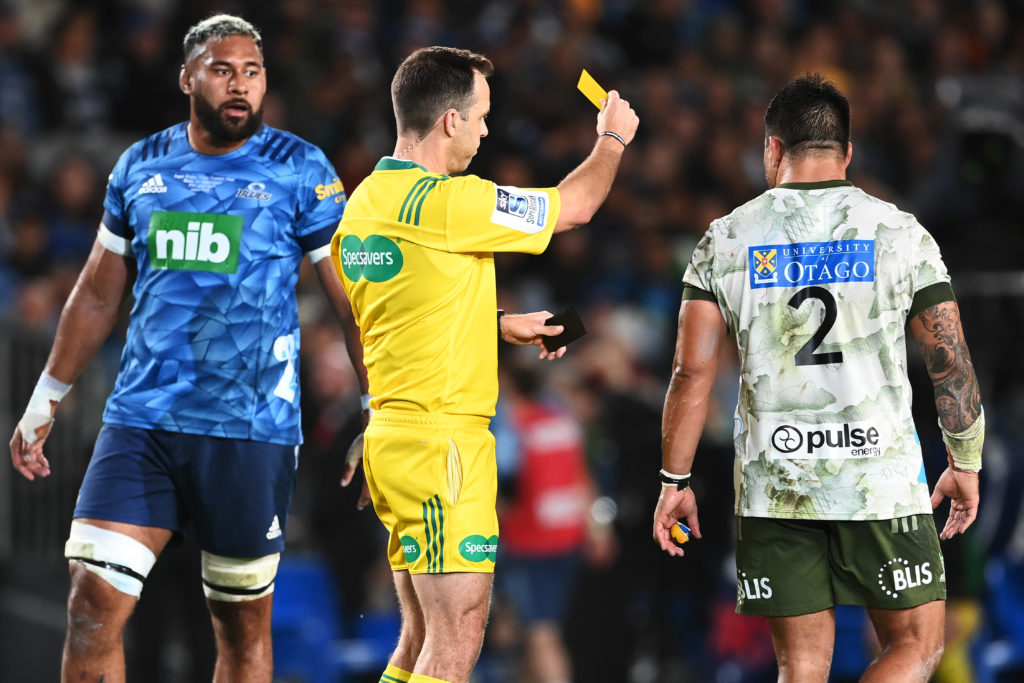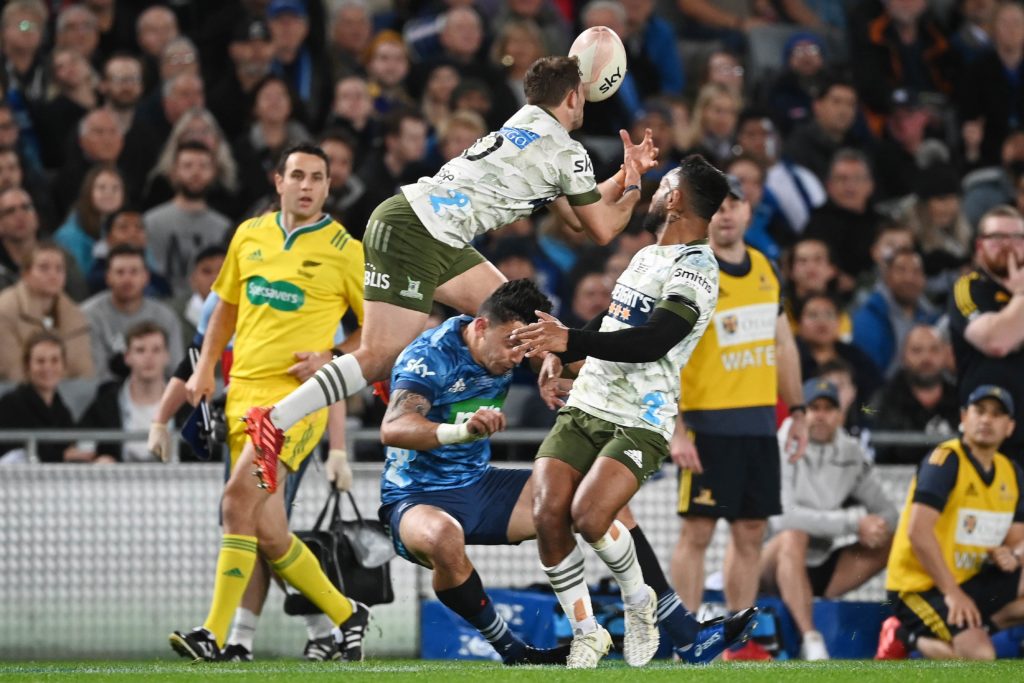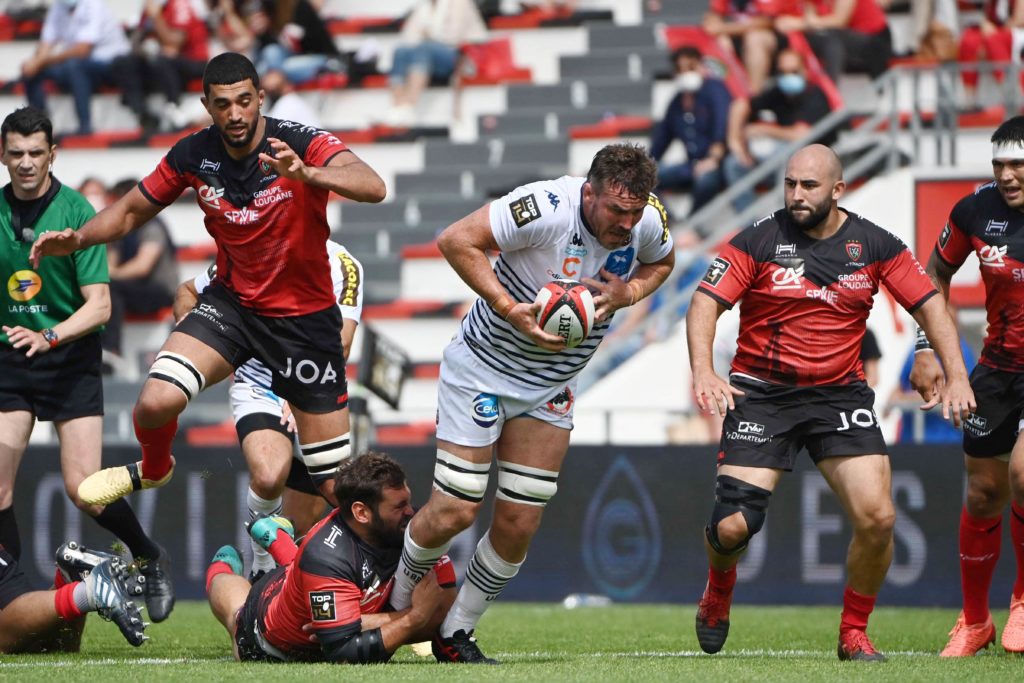The ending of the Blues’ 18-year Super Rugby drought with a come-from-behind victory in the trans-Tasman final over the Highlanders at Eden Park on Saturday has quite rightly dominated the weekend’s rugby headlines Down Under.
That the victory required the men from Auckland and significant parts further north of the city to dig to hitherto unseen depths in order to do so would have made the achievement all the sweeter for skipper Patrick Tuipulotu and company. They were big favourites to beat the southerners but in recent years have possessed a fragility, something approaching a bully’s soft centre, which meant that a tenacious team like the Highlanders were always going to be difficult opponents.
So, the competition’s front runners by virtue of their higher points differential deserve enormous credit for overcoming the adversity resulting from them falling behind in the final quarter despite their earlier domination. No matter their possession and territory advantages, the points just wouldn’t come. Blake Gibson isn’t normally one to wildly celebrate scoring a try but his jubilation after capitalising on a Hoskins Sotutu break with three minutes remaining was an indication of its significance.

Perhaps lost after the 23-15 victory in front of a crowd of 36,000 people (but not, it must be said, by social media), however, was the decision by referee Mike Fraser to show Highlanders hooker Ash Dixon only a yellow card for his high tackle on Blues first-five Otere Black as the match entered its second quarter.
High tackles and concussion are two areas of huge concern for World Rugby, who updated its high tackle laws in March to reflect that, which made Fraser’s actions (along with those of his three colleagues), and his comments in the aftermath of Dixon’s high shot a little confusing.
Dixon, who had clearly marked Black as a danger man and had earlier put a heavy but legal hit on him, caught the No 10 with his right shoulder as the Blues launched an attack just outside the Highlanders’ 22m.
Black was prone for an extended period but eventually continued in the general play before a stoppage and Fraser was alerted to the incident by television match official Brendon Pickerill.
Rugby’s contact area at the top level can be a chaotic and dynamic place but Dixon lined up Black from metres away and made a genuine attempt to wrap his arms (a factor which went in his favour) – he just got his height wrong. According to rugby’s high tackle framework, it appeared a straightforward red card decision.
The slow-motion replays on the big screen would have left Dixon, who was playing his 100th match for the Highlanders and who has a reputation for being a hard but fair player, possibly fearing the worst as he watched his opponent walk off for a head injury assessment.
They showed Black passing the ball before he was caught on his left jawline by Dixon. Black wasn’t dropping into the tackle, which is a mitigating factor, and nor did Dixon get fooled by a sudden change in direction, which is another.
Rugby’s contact area at the top level can be a chaotic and dynamic place but Dixon lined up Black from metres away and made a genuine attempt to wrap his arms (a factor which went in his favour) – he just got his height wrong. According to rugby’s high tackle framework, it appeared a straightforward red card decision.
It was here that things became problematic because rugby’s foul play laws centre heavily on the outcome; ie, a mid-air collision between two opposition players jumping for the ball will be seen as worthy of a harsher sanction should one of those players land on his head.
For instance, a little later in the match, Blues’ wing Bryce Heem collided in mid air with Highlanders’ No 10 Mitchell Hunt. Hunt, who caught the ball, dropped on to his shoulder area, a sequence of events which rang alarm bells for referee Fraser.

Fortunately for Heem, a collision with Highlanders’ wing Jona Nareki in the lead-up to his impact with Hunt was seen as sufficient mitigation to drop the sanction from a penalty and yellow card to only a penalty.
The key thing to remember, though, is that Hunt’s falling position forced Fraser to almost reach for his yellow card (he was advised by TMO Pickerill to take into account the collision with Nareki and so he downgraded his response).
But, despite World Rugby’s continuing crackdown on high tackles and despite Black’s head being snapped back by the force of the hit, Fraser felt that Dixon’s first impact was on Black’s shoulder (it didn’t appear to be), and that the head contact was “secondary”.
Some of the commentary since would have it that given Dixon is one of the game’s good guys, and that there was “no malice” in the tackle (his words as Fraser brandished the yellow card), the sanction was fair and justified and yet there is nothing in World Rugby’s high tackle laws that refers to malice or a player’s character.
The All Blacks had better prepare themselves for a red-card extravaganza on their end-of-year tour to the United Kingdom and Europe should they follow Dixon’s lead.
The “process questions” are limited to “contact with the head”, “foul play”, “degree of danger” and “mitigating factors”.
It’s unlikely Fraser would have been even subconsciously worried about playing a defining role in the Trans-Tasman showpiece because, firstly, he is an excellent and extremely experienced match official, and, secondly, the competition’s laws would have allowed for Dixon to have been replaced after 20 minutes. As it was, the Highlanders lost little in the time Dixon was off the field; Hunt scoring a penalty in reply to Harry Plummer’s three points for the high tackle.
That Dixon dodged a red card did not go unnoticed on social media and particularly by those living in the Northern Hemisphere, and while Twitter isn’t usually a reliable guide to anything apart from attention seeking behaviour, the prevailing view was that the All Blacks had better prepare themselves for a red-card extravaganza on their end-of-year tour to the United Kingdom and Europe should they follow Dixon’s lead.
And yet, the interpretation of events up north isn’t so clear cut either. On the same weekend, there were a couple of decisions in the Toulouse v Bordeaux Begles Top-14 semifinal which, euphemistically speaking, may have gone other ways.

Firstly, Australian Scott Higginbotham, the Bordeaux No 8, cleaned out Toulouse centre Santiago Chocobares at a ruck with the use of his right shoulder directly to the Argentine’s face. Chocobares fell clutching his face which prompted the television match official to notify referee Tual Trainini, but curiously Tainini ruled the intentional act acceptable. There were no mitigating factors. Again, it appeared a straightforward red card.
Secondly, an accidental collision between Bordeaux centre Ulupano Seutini and Toulouse first-five Romain Ntamack whereby the hard-charging Seutini made the right defensive read but got his execution wrong and the pair clashed heads in the act of a his dominant tackle was deemed a red card offence by referee Tainini.
In what was a disturbing incident, Ntamack appeared to lose consciousness before he hit the pitch and was taken off on a stretcher. His Toulouse side, 15-14 in arrears in the 58th minute, went on to win 24-21 but Ntamack is extremely unlikely to play in next weekend’s final against La Rochelle.
He wasn’t the only one to suffer. Seutini left the field with blood streaming from above his right eye but was adjudged to have made, according to the commentators’ translation of Trainini’s explanation, a “dangerous tackle at high speed”.
A deliberate act in which Higginbotham’s shoulder made contact with Chocobares’ head was deemed legal (Toulouse were awarded a penalty but for an earlier Bordeaux transgression), while an accidental head clash (albeit with significant consequences for Ntamack) was ruled a red card offence.
All of which suggests an inconsistency of decision making common in both hemispheres and a growing suspicion that World Rugby can change its high tackle framework all it wants – the crux of the matter is that it all comes down to the interpretation of the four match officials and in particular the one with whistle.



Comments
Join free and tell us what you really think!
Sign up for free